THE SURRENDER OF JAPAN
“We hereby proclaim the unconditional surrender to the Allied Powers of the Japanese Imperial General Headquarters and of all Japanese armed forces and all armed forces under Japanese control wherever situated.”
At 9:04 in the morning on September 2, 1945, aboard the new 45,000-ton battleship U.S.S. Missouri and before representatives of nine Allied nations, the Japanese signed the official Instrument of Surrender, prepared by the War Department and approved by President Truman. It set out in eight short paragraphs the complete capitulation of Japan. The surrender of Imperial Japan had been announced by Japanese Emperor Hirohito on August 15, negotiated by a Japanese delegation with Allied commanders in Manila, and formally signed in Tokyo Bay. The hostilities of World War II had come to a close.
Sunday, AUGUST 19, 1945
Negotiating the Surrender
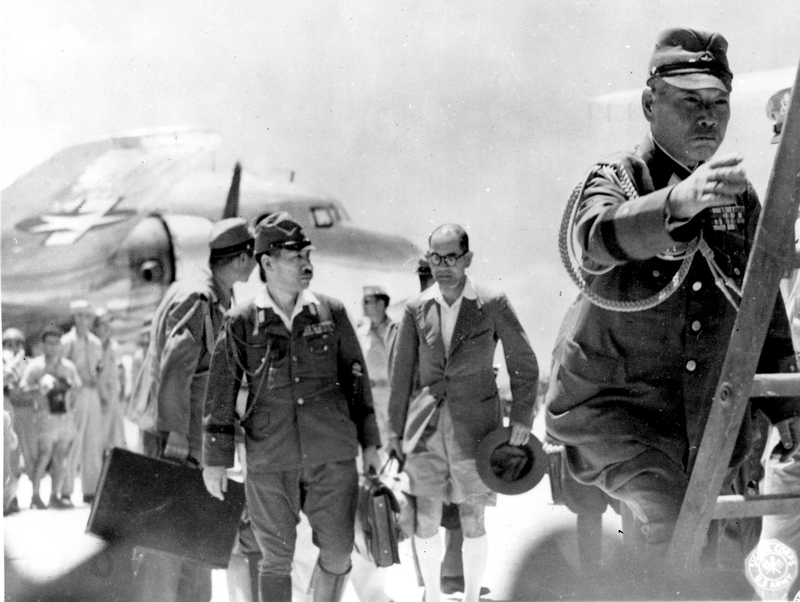
The 16-member Japanese delegation climb aboard an American C-54 transport at Ie Shima, Japan for the flight to Manila, Philippines where they negotiated the unconditional surrender of Japan that officially ended the war.
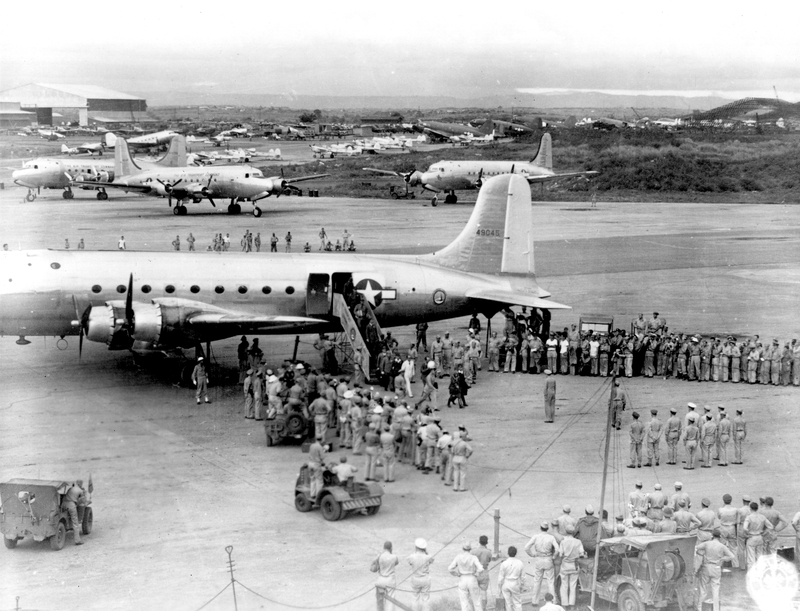
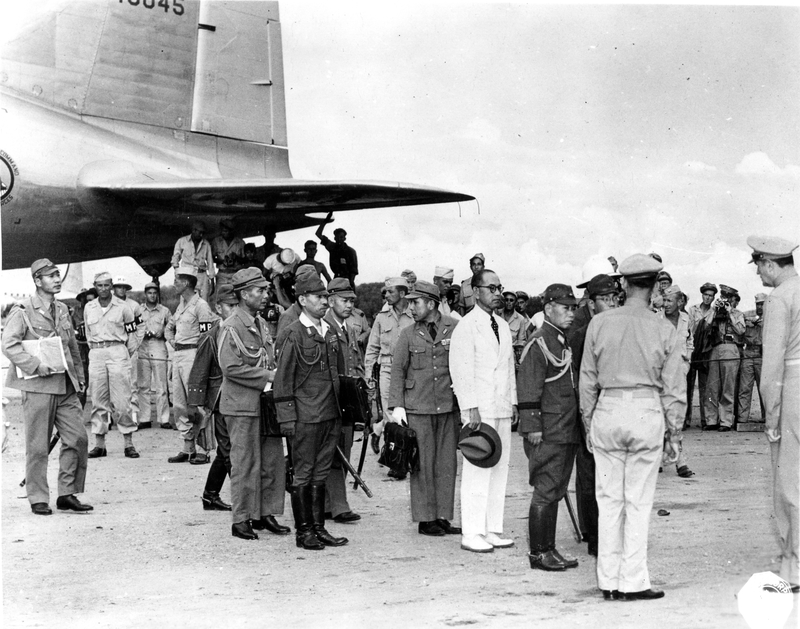
The Japanese delegation disembark and are greeted in Manila, Philippines by Major General Charles A. Willoughby (far right), who served as General Douglas MacArthur’s chief of intelligence during most of World War II and the Korean War.
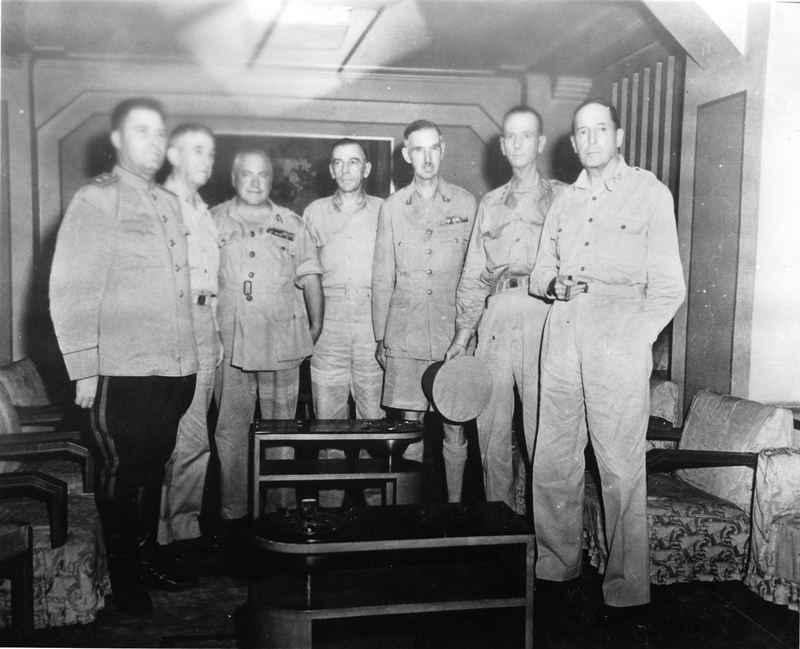
Allied commanders charged with negotiating the surrender stand together in Manila, Philippines: (L. to R.) Lieutenant General K. N. Dereyanko (Russia); General Walter Krueger (U.S.); General Sir Thomas Blamey (Australia); Lieutenant General Richard Sutherland (U.S.); Lieutenant General Arthur Percival (Great Britain); Lieutenant General Jonathan Wainwright and Supreme Allied Commander General Douglas MacArthur (U.S.).
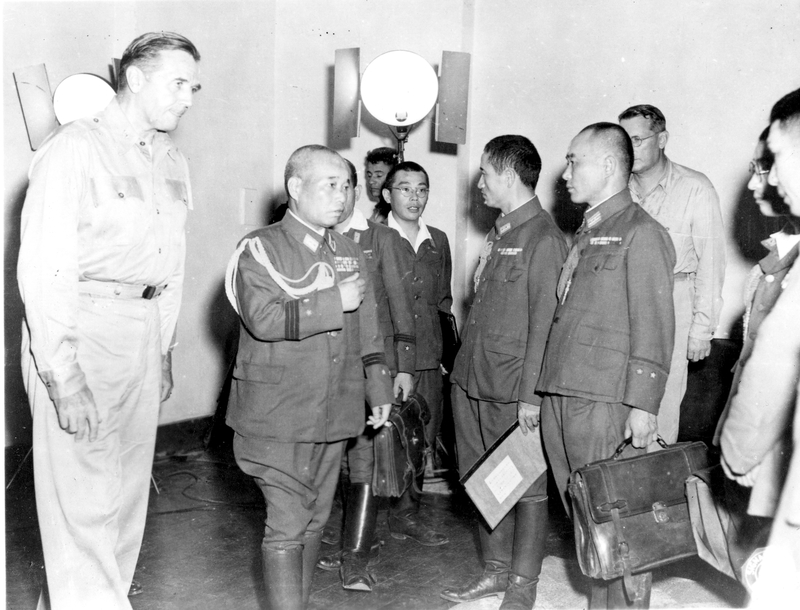
Major General Charles A. Willoughby (left), Intelligence Officer on General Douglas MacArthur’s staff, is shown with Lieutenant General Kawabe Torashiro (second from left) and unidentified members of the Japanese delegation as they arrive at General Headquarters in Manila, Philippines to begin negotiating the terms of surrender..
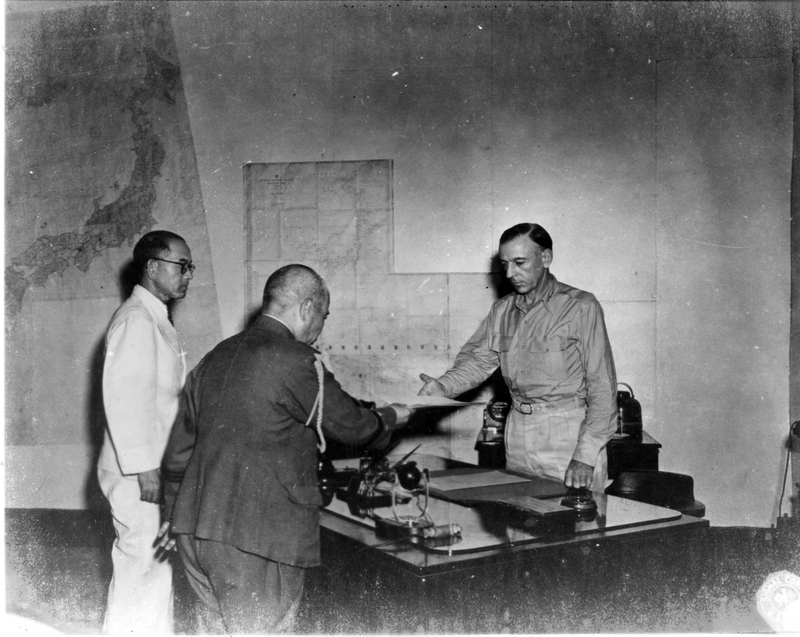
Japanese Lieutenant General Kawabe Torashiro, Vice Chief of the General Staff and head of the Japanese Surrender Delegation, presents his credentials from Emperor Hirohito to Lieutenant General Richard Sutherland, Chief of Staff to General Douglas MacArthur.
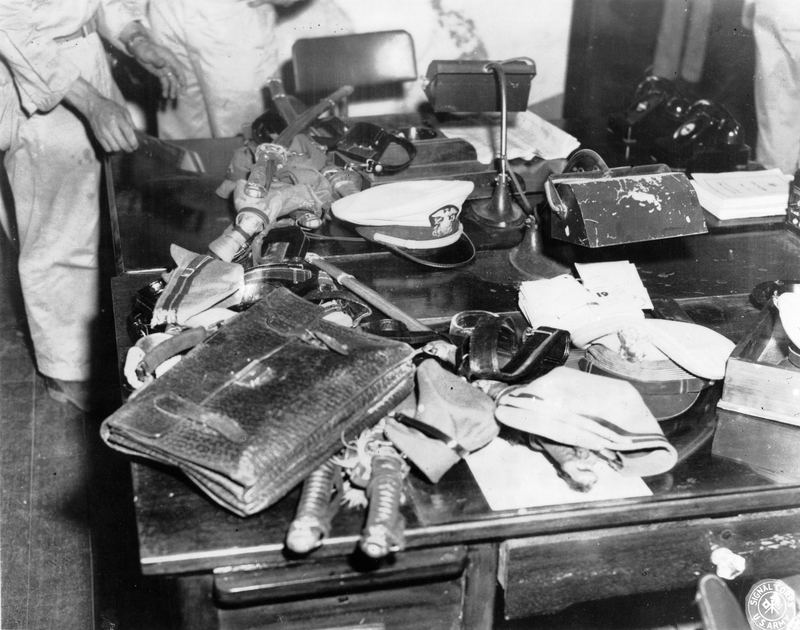
Gold-braided hats, samurai swords and briefcases rest in an ante-room at General Headquarters in Manila, Philippines as negotiations for the surrender begin.
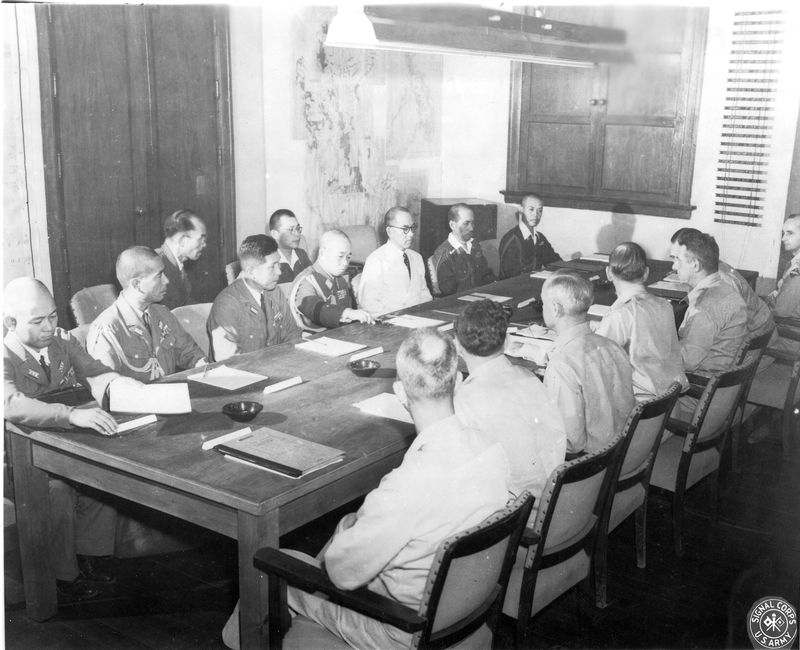
At the negotiating table at General Headquarters in Manila were, from left to right on the far side: Captain Hidemi Yoshida (Navy); Captain Toshiichi Omaye (Navy); Rear Admiral Ichiro Yokoyama (Navy); Lieutenant General Kawabe Torashiro (Army); Katsuo Okazaki, (Chief of the Research Division); Major General Morkikazu Amano (Army) and Lieutenant Colonel Masao Matsuda (Army). From left to right, on the near side of the conference table: Major General Lester J. Whitlock, Major General Richard Marshall; Rear Admiral Forrest P. Sherman; Lieutenant General Richard K. Sutherland; Major General S. J. Chamberlin; Major General C. A. Willoughby and Brigadier General D. R. Hutchinson.
Sunday, September 2, 1945
Ceremonial Surrender aboard the U.S.S. Missouri
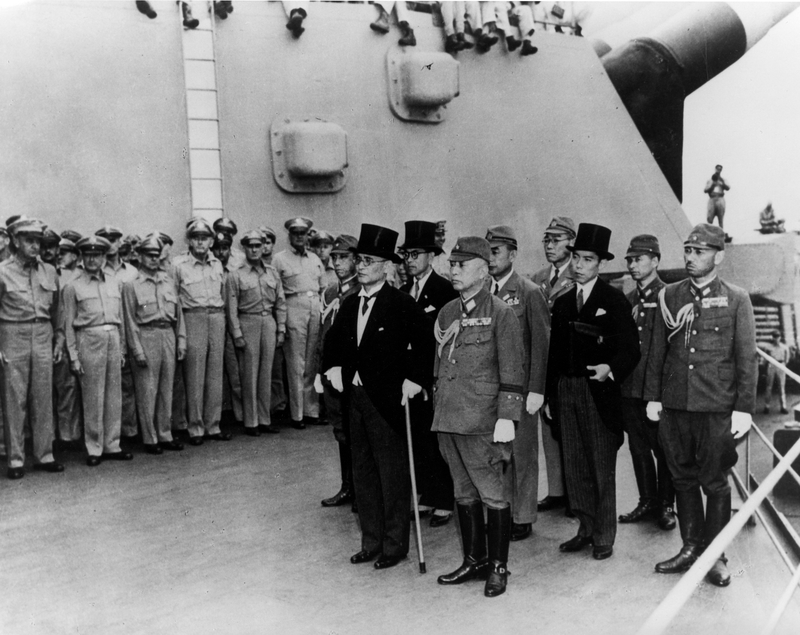
Foreign Minister Mamoru Shigemitsu and General Yoshijiro Umezu arrive at the U.S.S. Missouri in Tokyo Bay to sign the surrender of Japan.
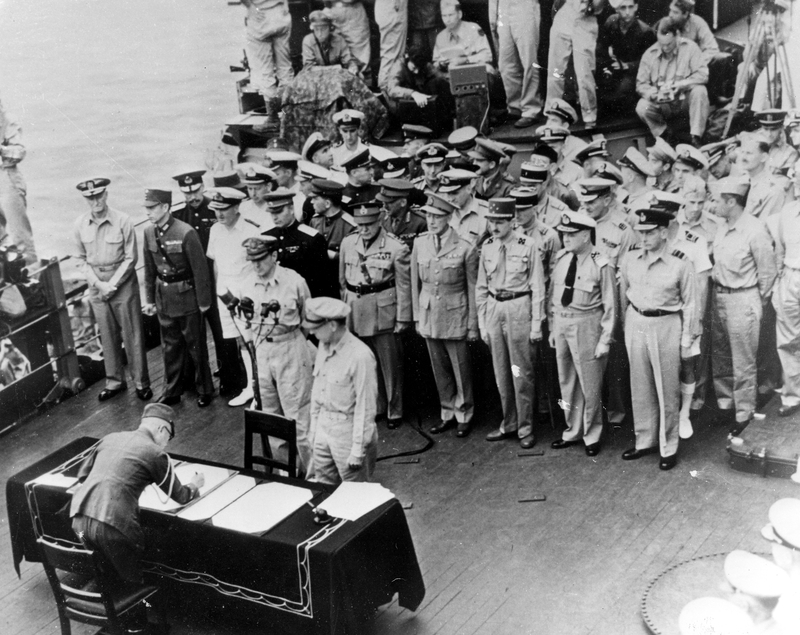
General Yoshijiro signs the instrument of unconditional surrender as General Douglas MacArthur watches.
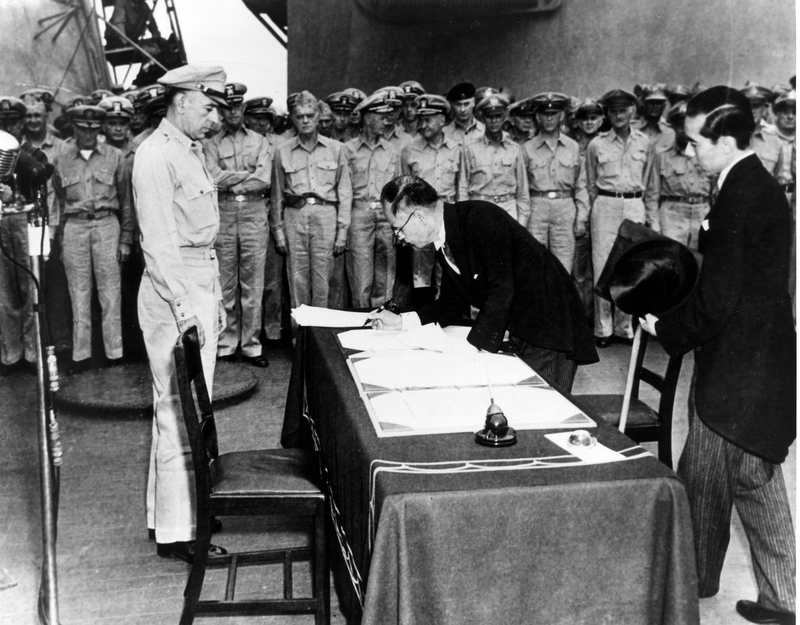
Japanese Foreign Minister Mamoru Shigemitsu signs the instrument of surrender terms while General Richard K. Sutherland looks on.
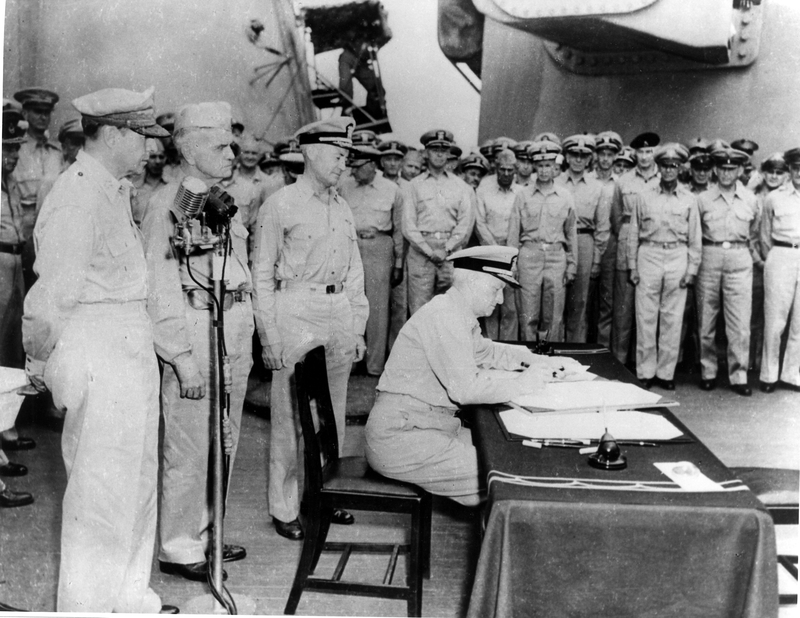
Admiral Chester W. Nimitz signs the instrument of unconditional surrender, formally marking the end of the war with Japan. Behind Admiral Nimitz are (left to right) General Douglas MacArthur, Admiral William F. Halsey and Rear Admiral Forrest Sherman.
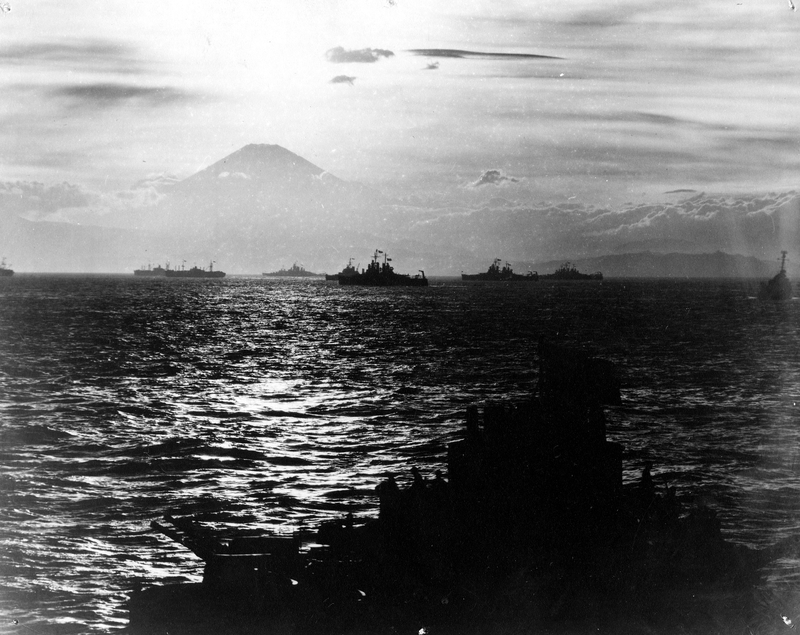
Following the ceremonial surrender, Admiral Nimitz captured the moment with this photo of the Pacific Fleet in Tokyo Bay.
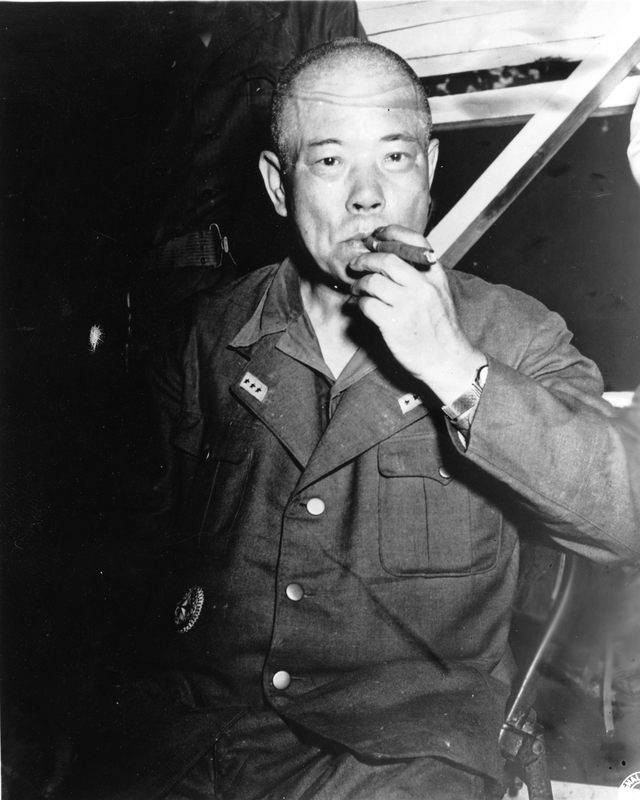
General Tomoyuki Yamashita, Commander of all Japanese forces in the Philippines, calmy puffs an American cigar as he surrenders to the 128th Regiment of the 32nd Division at Kiangan, Nueva, Visocaya, Province on Luzon, Philippines. (He had refused to surrender until the Japanese government signed the formal surrender agreement aboard the USS Missouri.) Called “The Tiger of Malaya” for his swift conquering of Singapore and Malaya, General Yamashita would later be tried and convicted for war crimes related to the Manila massacre and numerous atrocities against civilians and prisoners of war. He was executed on February 23, 1946.
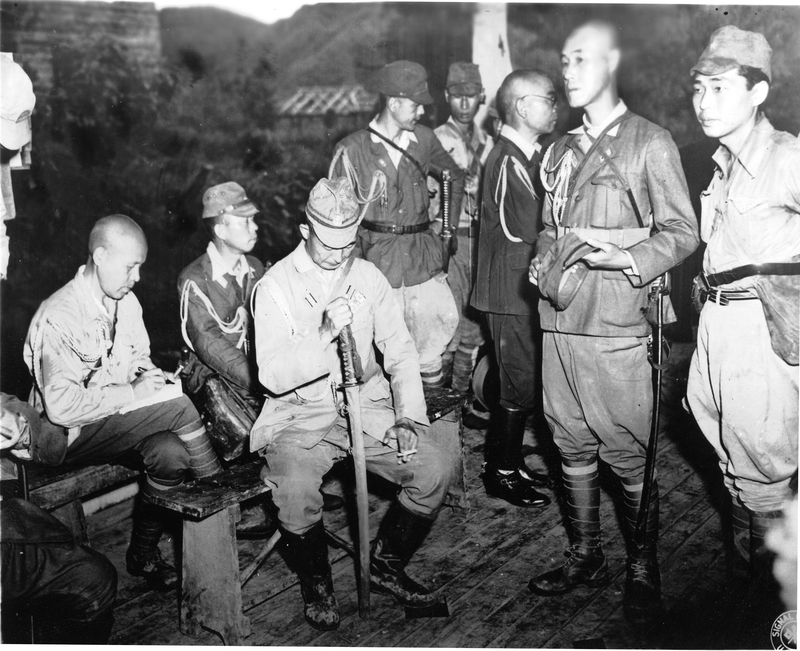
High ranking Japanese officers on General Yamashita’s staff, following their surrender in Northern Luzon, Philippines.
Friday, September 7, 1945
Washington, D.C.
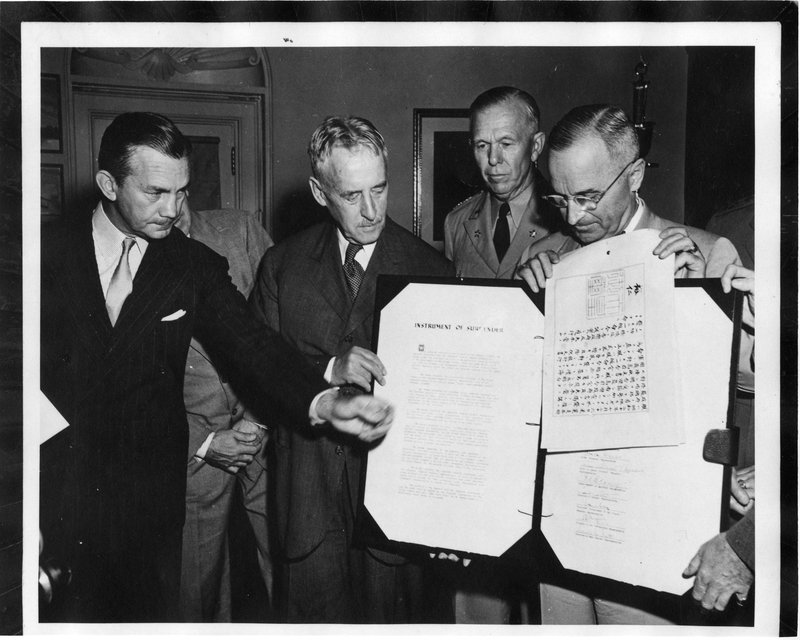
President Harry S. Truman holds the original surrender document signed by the Japanese dignitaries aboard the USS Missouri in Tokyo Bay on September 2, 1945. Standing from left to right are: Secretary of the Navy James Forrestal, Secretary of War Henry Stimson, General George C. Marshall, and President Truman.
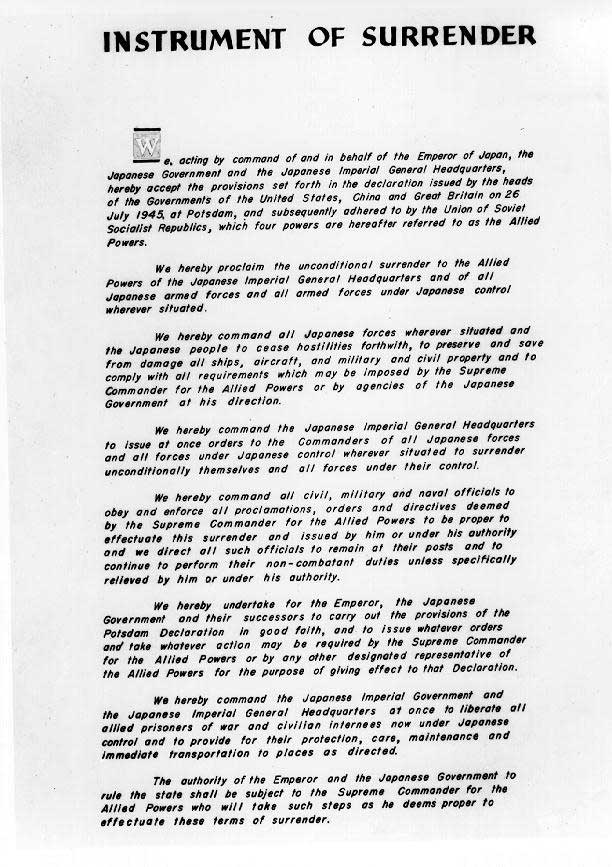
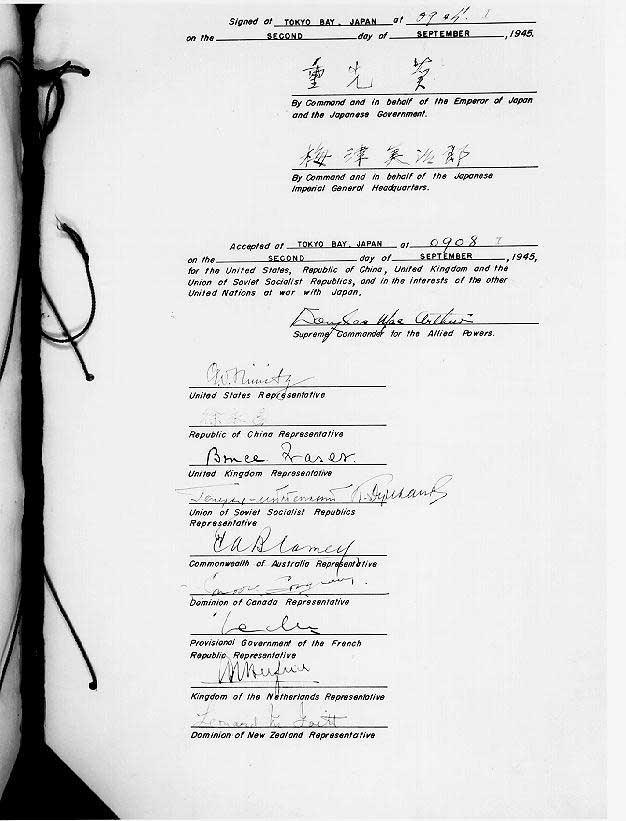
The official Instrument of Surrender, prepared by the War Department and approved by President Truman, set out in eight short paragraphs the complete capitulation of Japan. Following the presentation to President Truman on September 7, the historic documents were exhibited at the National Archives. On October 1, 1945, they were formally received (accessioned) into the holdings of the National Archives.
All images featured in this post are part of the extensive online photography collection of the Harry S. Truman Library and Museum.
Listen to President Truman’s radio address to the American people after the signing of the terms of unconditional surrender. His message was broadcast by CBS at 9:56 p.m. on September 2, 1945.

